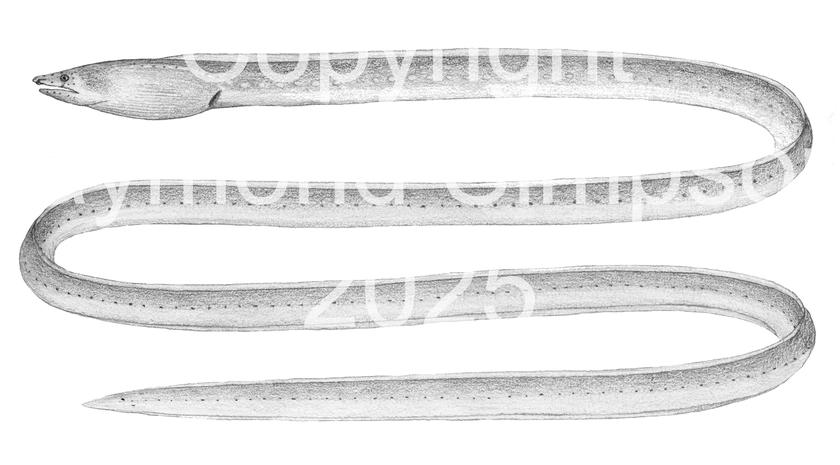
Common Name
Irksome Eel
Year Described
McCosker, Böhlke & Böhlke, 1989
Identification
Vertebrae: 180-186
Body extremely elongate. Cylindrical anteriorly in cross-section but compressed posteriorly. Trunk longer than tail. Snout pointed laterally, bluntly rounded dorsally, and overhangs mouth. Underside of snout with a toothed median groove reaching anterior nostrils. Eye small and around middle of jaw. Anterior nostril tubular on underside of snout. Posterior nostril opens under eye as a small slit. Jaw teeth small and uniserial (9-11 on top and 9 on lower jaw). Intermaxillary teeth (4) present. Vomerine teeth in one row (11 teeth). Gill openings crescent-shaped, low on body and converging anteriorly. Gill pouch and body distinctly grooved. Dorsal fin origin well before gill openings, high in height anteriorly, and ending before tail tip. Anal fin present. Pectoral and caudal fins absent. Tail tip hard and pointed. Lateral line complete. One temporal, 1 interorbital, 5 mandibular, and 2 preopercular pores.
Color
Body brown above and grading abruptly whitish below. Lateral pores pale. Gill opening darker. Head paler with brownish markings above and a white patch around the eyes.
Size
Maximum size to 34cm TL.
Habitat
Found on the continental shelf from 10-300m. Adults on soft bottoms in deeper water. Larvae near the surface.
Range
Off W. Florida, the Yucatan Peninsula, and Venezuela. Larvae supposedly of this species known from off the east coast of the U.S.
References
Böhlke, E. B. (ed.). 1989. Volume One: Orders Anguilliformes and Saccopharyngiformes. Volume Two: Leptocephali. Fishes of the western North Atlantic. Memoirs of the Sears Foundation of Marine Research Mem. 1 (part 9): v. 1:i-xvii + 1-655; 2:i-vii + 657-1055.
Other Notes
Known from one adult and several larval specimens. Unique among Gordiichthys in having tubular front nostrils but likely belongs to a undescribed new genus.